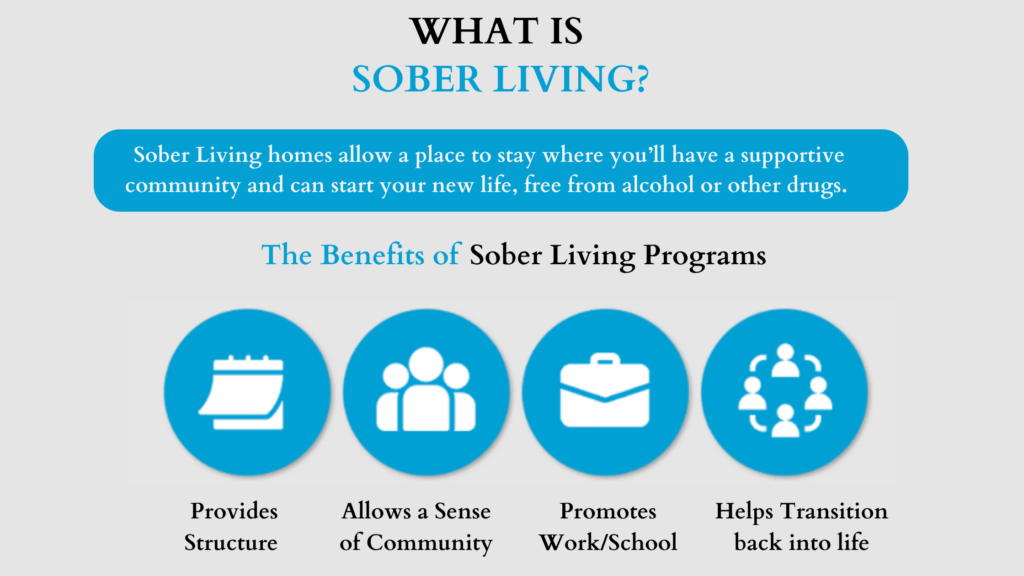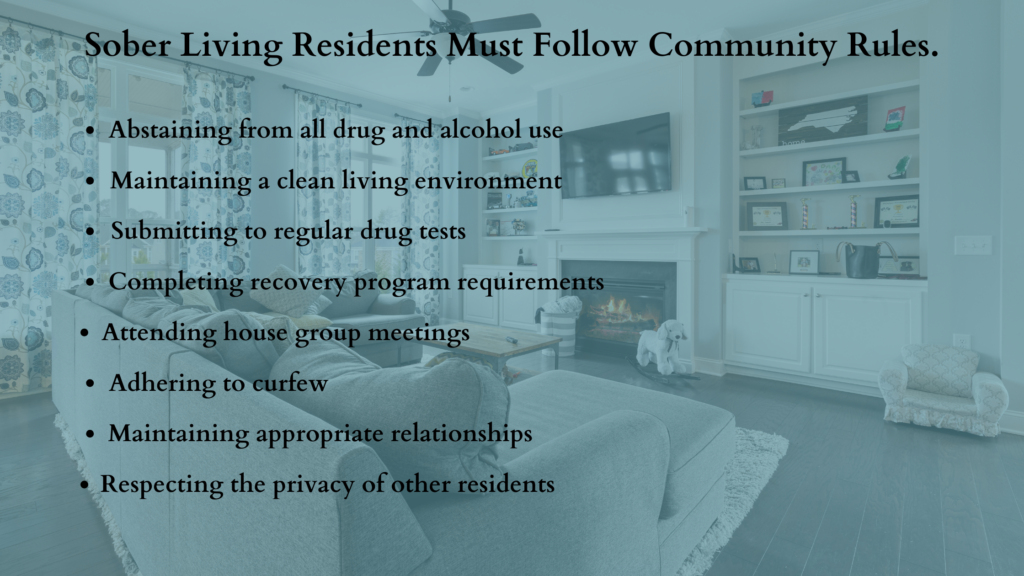Understanding sober living house cost is crucial when taking the first step towards recovery, as finding the right support system plays a key role in sustained success. Sober living houses offer a vital bridge between inpatient treatment and independent living, providing a structured environment conducive to long-term sobriety.
For those navigating this path, a sober living house often emerges as a crucial bridge, providing the necessary support between intensive treatment programs and the eventual transition to independent living.
One significant question looms large in the minds of those considering this pivotal step: “How much does a sober living cost?” Join us in this exploration of the financial dimensions of sober living, as we not only address the price tag but also unravel the factors influencing costs and the profound value these homes offer to individuals seeking a supportive and sober environment.
How Much Does a Sober Living House Cost?
Sober living homes typically cost between $300 and $2,500 per month, depending on location, amenities, and level of support. On average, most homes charge $500 to $1,200 per month. Luxury facilities with added services may cost more.
Explanation:
Sober living houses provide a structured, substance-free environment for individuals recovering from addiction. Costs vary based on factors like private vs. shared rooms, on-site support, and geographic location. Some homes accept insurance or offer financial assistance.
- Affordable sober living homes often provide shared rooms and fewer amenities.
- Mid-range homes offer private rooms, counseling, and structured programs.
- Luxury sober living includes upscale accommodations, personalized therapy, and recreational activities.
- Some homes accept insurance or financial aid, reducing out-of-pocket costs.
Understanding Sober Living Homes: A Closer Look at Supportive Spaces for Recovery
Sober living homes, also known as halfway houses or transitional living residences, serve as a supportive bridge between the structured environment of rehabilitation programs and the independence of daily life. These homes offer individuals in recovery a unique space where they can practice the skills acquired during intensive treatment while benefiting from a community of like-minded peers. Unlike treatment centers, sober living homes emphasize a less restrictive atmosphere, allowing residents more autonomy while providing a safety net of support.

Key Characteristics of Sober Living Homes
When considering sober living house costs, it’s essential to understand the benefits these homes provide. The cost varies based on location, amenities, and support services, but all sober living homes share core characteristics that support long-term recovery:
1. Structured Independence
Sober living homes offer a balance between structure and personal independence. Residents follow house rules designed to support sobriety while managing their daily responsibilities, work, and personal time. This structured environment helps individuals transition smoothly from rehab to independent living.
2. Community Support
A strong sense of community is one of the most valuable aspects of sober living homes. Residents share a commitment to sobriety, providing emotional support and accountability. This peer-driven environment fosters connection and motivation, both of which are critical for maintaining long-term recovery.
3. Accountability and Responsibility
Most sober living houses have structured guidelines, including curfews, mandatory house meetings, and assigned household duties. These expectations help residents build discipline and accountability—essential skills for a successful transition back into everyday life.
4. Zero-Tolerance Policy for Substance Use
To maintain a safe and supportive space, sober living homes enforce strict zero-tolerance policies on drugs and alcohol. This eliminates exposure to triggers and relapses, ensuring a stable environment that prioritizes recovery.
5. Transitional Nature:
Sober living is often viewed as a transitional phase in the recovery journey. Residents may stay for varying durations, with the goal of gradually reintegrating into independent living as they gain confidence and stability in their sobriety.
Is the Cost of a Sober Living House Worth It?
The cost of a sober living home typically ranges from $300 to $2,500 per month, depending on the location and services offered. While some may seem expensive, the structured environment, peer support, and accountability significantly increase the chances of long-term sobriety—making it a valuable investment in recovery.
Overall, sober living homes can be a crucial component of successful recovery, providing a safe haven, a supportive community, and the tools necessary to build a healthy and fulfilling life beyond addiction.

Who Can Benefit from Sober Living Homes?
Sober living homes extend their supportive embrace to a diverse range of individuals at various stages of the recovery journey. These unique environments become particularly beneficial for those who have completed primary treatment and find themselves in need of an intermediary step before fully reintegrating into everyday life.
Let’s explore in more detail who can derive significant advantages from the welcoming space provided by sober living homes:
1. Require a Structured and Sober Environment:
Individuals who thrive in structured environments, especially those conducive to sobriety, find sober living homes to be a sanctuary. The adherence to house rules and a zero-tolerance policy for substance use creates a stable backdrop for individuals who benefit from clear guidelines.
2. Seek Peer Support and Community:
The communal aspect of sober living homes is a cornerstone of their effectiveness. For those yearning for peer support and a sense of community, these homes offer a shared journey toward sobriety. The mutual understanding among residents fosters a supportive atmosphere where individuals feel understood and encouraged.
3. Need to Practice Relapse Prevention Skills in a Real-World Setting:
Sober living homes serve as real-world laboratories for practicing and honing relapse prevention skills. Individuals who recognize the importance of applying learned strategies in everyday scenarios find the transitional nature of these homes invaluable. It’s a practical and supportive space for individuals to fortify their resilience against potential triggers.
4. Desire a Gradual Transition from Intensive Treatment to Independent Living:
The gradual transition facilitated by sober living homes is particularly appealing to those who wish to take measured steps toward independent living. It acts as a vital intermediary phase, allowing individuals to build confidence and stability in their sobriety before navigating the challenges of complete independence.
Is Sober Living Worth the Cost?
Sober living homes may seem expensive, but they provide structure, accountability, and a sober environment—crucial for long-term recovery. Here’s why many individuals find the investment worthwhile:
- Reduces Relapse Risks – Studies show that individuals in sober living homes have higher sobriety success rates compared to those who return directly to independent living.
- Provides Stability & Routine – Residents gradually transition from rehab to daily life with built-in accountability.
- More Affordable Than Rehab – While inpatient rehab can cost $6,000–$20,000 per month, sober living is a low-cost alternative for continued support.
Navigating Options: Different Types of Sober Living Homes
In the landscape of addiction recovery, sober living homes present a diverse array of options, each designed to meet specific needs and preferences. These varied environments serve as essential milestones, providing individuals with the necessary support and structure for a lasting commitment to sobriety. Let’s explore the different types of sober living homes, each offering a unique approach to the recovery journey.
1. Standard Sober Living Homes:
- Following a traditional model, these homes provide a supportive environment for individuals transitioning from primary treatment to independent living. Residents typically adhere to house rules, participate in group meetings, and contribute to household responsibilities.
2. Peer-Led Sober Living Homes:
- In peer-led homes, residents take an active role in managing and making decisions. While upholding sobriety principles, these homes emphasize a communal approach where residents collectively contribute to the well-being of the house.
3. Therapeutically-Oriented Sober Living Homes:
- Integrating additional therapeutic services, these homes offer counseling, group therapy sessions, and other clinical support to address underlying issues contributing to addiction.
4. Specialized Sober Living Homes:
- Catering to specific demographics, such as gender-specific or age-specific residences, these homes recognize and address the unique needs of certain groups.
5. High-End Sober Living Homes:
- Offering a more upscale living experience, luxury sober living homes provide additional amenities such as private rooms, gourmet meals, and recreational facilities for a more comfortable environment.
6. Transitional Living Apartments:
- Providing a more independent living arrangement within a sober community, transitional living apartments allow residents to have their own living space while benefiting from community support and structure.
7. Community-Based Sober Living Homes:
- Emphasizing shared responsibility and collaboration, community-based homes encourage residents to actively participate in decision-making processes, fostering a strong sense of community and accountability.
8. Non-Abstinence Sober Living Homes:
- While most sober living homes adhere to abstinence-based models, non-abstinence homes focus on harm reduction, recognizing that sobriety may be a gradual process. Residents work towards reducing harm and improving overall well-being.
With their diverse offerings, sober living homes underscore the importance of choosing an environment that aligns with individual needs and preferences. Whether opting for a standard transitional home, a more peer-involved setting, or a specialized residence, individuals can find a personalized approach to support their journey toward sustained recovery. The various types of sober living homes contribute to the inclusivity of addiction recovery, offering a spectrum of options to meet the diverse needs of those on the path to rebuilding their lives.
How Do Sober Living Houses Operate?
The inner workings of sober living houses can vary slightly depending on the specific type and program, but they generally share some core principles and routines to provide structure and support for residents. Here’s a breakdown of how they typically operate:
Basic Structure:
- Shared living: Residents typically share bedrooms and common areas, fostering a sense of community and accountability.
- Curfews and rules: Most houses have curfews and guidelines regarding substance use, overnight guests, and household responsibilities to maintain a safe and sober environment.
- House meetings: Regular meetings facilitate communication, address concerns, and provide opportunities for peer support and shared experiences.
- Chores and responsibilities: Residents usually share in household chores and tasks to develop life skills and contribute to the community.
- Recovery focus: Participation in support groups, individual therapy, and other recovery activities is often encouraged or even mandatory.
Day-to-Day Life:
- Structure and routine: Residents wake up at set times, attend meetings, work or attend school, cook or share meals together, and participate in house activities.
- Random drug and alcohol testing: Many houses implement random testing to ensure sobriety and accountability.
- Support and accountability: Residents have access to house management and peers for support, guidance, and encouragement in navigating challenges and maintaining sobriety.
- Life skills development: Chores, shared finances, and daily living provide opportunities to learn and practice essential life skills.
- Community and belonging: The shared experience of recovery fosters a sense of belonging and understanding, reducing feelings of isolation and providing a safety net.
Additional Considerations:
- Length of stay: Residents can stay for varying periods, depending on their individual needs and progress.
- Cost: Housing fees vary based on amenities, location, and level of support offered.
- Qualifications: Some houses may have specific requirements for entry, such as completion of treatment programs or minimum length of sobriety.
Overall, sober living houses function as structured, supportive environments that equip residents with the tools and community needed to navigate recovery, learn life skills, and gradually transition back to independent living.
FAQs
How much does a sober living house cost per month?
Sober living homes typically cost between $300 and $2,500 per month, depending on location, amenities, and level of support. Basic shared housing is more affordable, while luxury sober living can be more expensive due to added services like private rooms, therapy, and wellness programs.
Does insurance cover sober living homes?
Most sober living homes are not covered by insurance, as they are considered transitional housing rather than medical treatment. However, some homes accept partial coverage for services like therapy or outpatient programs. Check with your provider to explore potential financial assistance options.
What factors influence the cost of a sober living home?
The cost of sober living depends on several key factors:
- Location: Urban areas tend to have higher costs.
- Amenities: Private rooms, gyms, and wellness programs increase pricing.
- Level of Support: Homes with on-site staff and counseling cost more.
- Length of Stay: Some offer discounts for long-term residents.
What is the difference between rehab and a sober living house?
Rehab (rehabilitation centers) provide medical detox and intensive therapy, often requiring 24/7 supervision. Sober living homes, on the other hand, offer a structured, drug-free environment for individuals transitioning back to independent living after treatment, but they do not provide medical care.
Can you work while living in a sober living home?
Yes, most sober living homes encourage residents to work or attend school while maintaining sobriety. These homes promote independent living while enforcing house rules like curfews, drug testing, and mandatory meetings.
How long can you stay in a sober living house?
There is no fixed limit, but most residents stay between 3 to 12 months. Some may stay longer depending on their recovery progress and need for support before transitioning to full independence.
Is sober living worth the cost?
For many in recovery, the cost of sober living is a valuable investment in long-term sobriety. These homes provide structure, accountability, and a support system, reducing the risk of relapse and helping individuals build a stable, substance-free future.
Conclusion:
Understanding sober living house costs isn’t just about finances—it’s about investing in long-term sobriety, stability, and personal growth. A sober living home provides a structured, supportive environment that significantly enhances the chances of sustained recovery.
While costs vary based on location, amenities, and program intensity, each dollar spent contributes to a healthier, more fulfilling future. The real value of sober living lies in its ability to provide accountability, community support, and a structured transition back to independent life.
If you or a loved one have navigated the financial aspects of sober living, we’d love to hear your insights. How did it impact your recovery journey? Share your experiences, questions, or thoughts in the comments below—let’s build a space for shared wisdom and encouragement.
Want to explore affordable sober living options? Contact us today for personalized recommendations and find the right fit for your recovery journey.










